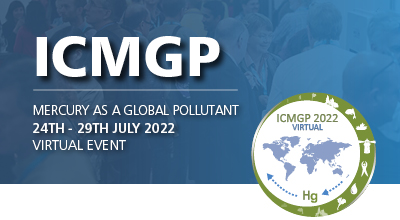| Abstract Title: | Total and Methyl Mercury Accumulation in Crops, Fish, Chicken, and Eggs from Artisanal Gold Mining Areas of Madre de Dios, Peru |
| Presenter Name: | Melissa Marchese |
| Company/Institution: | Duke University |
| Session: | Mercury in Artisanal Gold Mining |
| Co-Authors: | Melissa Marchese,Jacqueline Gerson,Charles Driscoll,Heileen Hsu-Kim,Kelsey Lansdale,Eliza Letourneau,Mario Montesdeoca,William Pan,Emily Bernhardt |
Abstract Information :
Artisanal and small-scale gold mining (ASGM) is the largest global source of anthropogenic mercury (Hg) emissions and is particularly widespread in the Peruvian Amazon. In areas where ASGM occurs, consuming Hg-laden foods can expose people to this potent neurotoxin. While much previous research has examined Hg in fish from aquatic ecosystems, accumulation in commonly consumed plants and animals from terrestrial environments is often overlooked. To understand Hg uptake in food staples from the Peruvian Amazon, we measured Hg content of local crops, fish, chicken, and eggs from communities heavily impacted by mining and remote communities surrounded by preserved forest. Stable carbon and nitrogen isotope signatures of fish and chicken meat were also analyzed to assess trophic magnification. Chicken meats, feathers, and crops from mining-impacted communities had significantly higher Hg than those from remote communities. Average total Hg content of tissues and feathers from mining areas were 44 and 620 ?g/kg, respectively, compared to 7 and 220 ?g/kg in those from remote areas. Chicken meats, but not eggs, from mining areas had significantly higher methylmercury (MeHg) concentrations than those from remote areas. The average MeHg proportion in chicken muscle tissue was 84%. Though few crops exceeded international food safety recommendations, MeHg proportions in rice were very high (94%). As expected, trophic level was a key predictor of fish Hg content, and 81% (17 of 21) of carnivorous fish from the region exceeded WHO guidelines. In chickens, egg whites and livers were most likely to exceed Hg recommendations. Trophic position was not a significant predictor of chicken Hg content, but proximity to mining was, indicating that Hg accumulation is strongly associated with mining presence and not dietary differences. Our results demonstrate that both terrestrial and aquatic foods can accumulate Hg from mining activity, leading to additional human Hg exposure routes.



